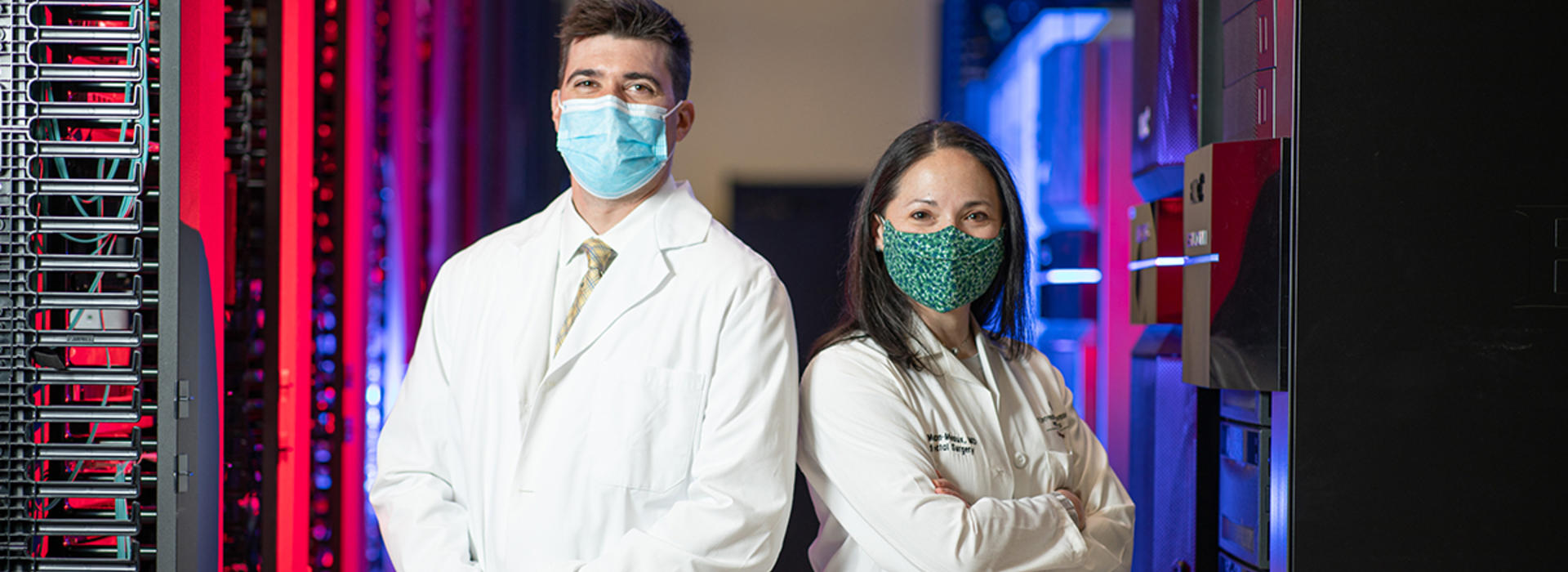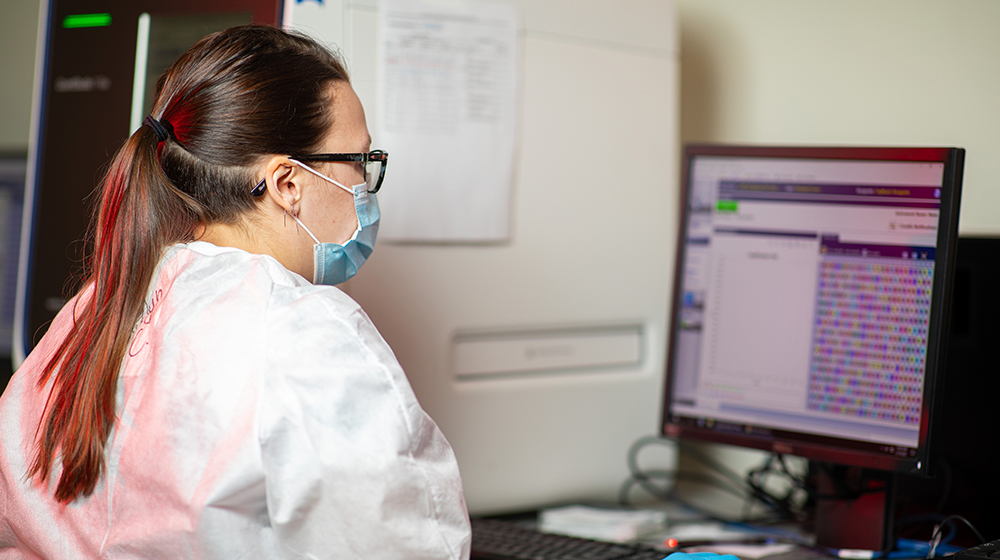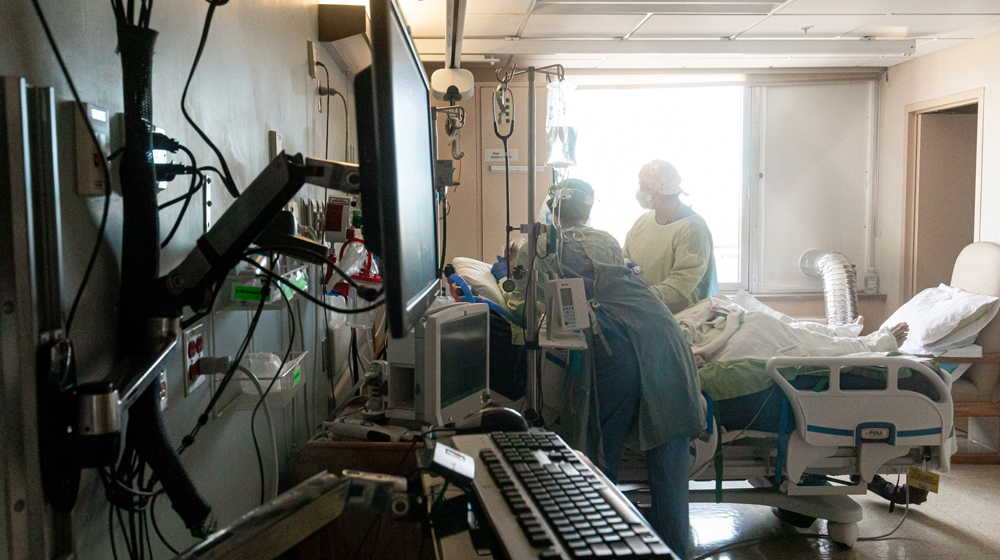
How to Build a Learning Health System
How to Build a Learning Health System
U of M Medical School Shares Key Ingredients
Read time: 3.5 minutes
“Learning” may just be the defining word of the last year in science and healthcare – learning that masks do work well in slowing the spread of viruses and that safe, effective vaccines can be produced and distributed “at warp speed.” A year ago, science simply needed more time to learn.
To do that, many institutions began to blend healthcare improvement work, implementation of evidence into practice and data science to create a Learning Health System (LHS) – or a system in which individual clinician-patient interactions inform the larger health system and generate new evidence on how to continually improve the quality of healthcare for all patients.
At the University of Minnesota Medical School, the development of LHS has spurred new COVID-19 clinical trials using repurposed drugs and led to the first evidence-based COVID-19 clinical care guidelines for emergency physicians on when to admit or discharge patients. Faculty even collaborated with Epic and other centers on a COVID-19 diagnostic artificial intelligence algorithm using chest X-rays and integrated this into M Health Fairview electronic health records.
The infrastructure behind a LHS, however, involves many moving parts – some foundational and others more flexible. Two U of M Medical School faculty from the Department of Surgery – Genevieve Melton-Meaux, MD, PhD, professor, and Chris Tignanelli, MD, MS, assistant professor – share the key ingredients needed to build a LHS within an academic health system:
Get involved in professional or national societies related to LHS;
Build a multidisciplinary evidence-synthesis team and interoperable data infrastructure;
Where possible, find a shared win-win with the private sector;
And, partner directly with outside health systems for maximal impact.
Get Involved in Professional or National Societies on LHS

Dr. Tignanelli says the first step is to get connected. In 2018, he received an invite from the Centers for Disease Control to join their “Adapting Clinical Guidelines for the Digital Age” project. When COVID-19 hit, a C19 Digital Guidelines working group was developed to focus specifically on digital guidelines for COVID-19, where they began working on anticoagulation research.
“I started participating more and more and showing them what we were doing. Slowly, we got more interest from these national and third-party companies who wanted to work with us,” Dr. Tignanelli said. “From there, it took off.”
He suggests that members of other academic health systems get engaged in various workgroups related to informatics and learning health systems, either within their professional societies or through national groups, like the WHO and CDC.
“And, when you’re there,” he says, “take time to present and share what you are doing and jump on new opportunities to partner as they come up.”
Build a Multidisciplinary Evidence-Synthesis Team and Interoperable Data Infrastructure
The next step is to build a multidisciplinary team of domain experts who can synthesize the latest research evidence on a certain topic and convert that information into written guidelines and operational protocols that lead to decision-support tools.
“How do you take all of these papers that are published, convert it into practice and get everyone at 12 different hospitals to agree? This is how we want to practice medicine, but that's probably one of the biggest challenges in doing it,” Dr. Tignanelli says.
The U of M multidisciplinary team is made up of close to 50people across medicine, critical care, hematology and pharmacy, as well as the U of M AHRQ-funded Evidence-Based Practice Center (led through the School of Public Health), informaticists, implementation scientists and biostatisticians, who review the literature in order to determine “high or low evidence” using an agreed-upon metric system.
“And, start making headway, if you haven't already, on developing interoperable data standards and tools so that everyone's talking the same language and the technologies needed to hardwire the guideline can be used across sites. That way, the models and results of those can be freely shared across each other, and you’re comparing apples to apples,” Dr. Tignanelli says.
If the data infrastructure and tools are interoperable, a clinical decision-support tool could be plugged into other health systems and impact communities on a much broader level.
Where Possible, Find a Shared Win-Win with the Private Sector

Sometimes, making a LHS possible involves collaborations with the private sector. The U of M team recognizes that third-party companies, at the end of the day, want to make an impact and to support their business, so finding a shared win is critical in the development of any LHS.
“Working with private sector companies can sometimes be seen as problematic,” Dr. Melton-Meaux says. “Thankfully, we work in healthcare, so more often than not, the value of our collaborations can jointly be about improved outcomes for both the patients and the health systems. Most companies are also open to research collaborations, the integrity of the scientific process and disseminating the results with tools as they are implemented in practice.”
Partner Directly with Outside Health Systems for Maximal Impact
Dr, Melton-Meaux also recommends judging potential collaborations with other healthcare organizations by focusing on the strengths of the academic research opportunity. Whether it’s stroke or heart attack care or experience with a type of data analysis, align potential projects with the available expertise and strengths in patient care.
Dr. Tignanelli suggests that another advantage of working with other health systems is that data models can be strengthened with larger patient populations and with more data, which helps to externally validate proposed methods.
“That’s the difference between a low impact or high impact research paper because it helps ensure that the models developed are more robust,” he says. “Finding a couple hospital systems to collaborate with early on is critical, and if you want to team up with us here in Minnesota, please reach out because we would love to have more partners.”
Both Dr. Tignanelli and Dr. Melton-Meaux emphasize the value of “being open to collaboration” with all.
“In developing these systems, there's much less of a line between your academic and health systems – between basic sciences and PhDs and your health sciences and MDs,” Dr. Melton-Meaux said. “It's more about, how do we all do this together and bring folks together in a different way.”
Healthcare Providers and Tech Vendors Partner to Create Industry-First FHIR-Based Computable Clinical Practice Guideline to Treat COVID-19
A national workgroup, including the University of Minnesota Medical School, partnered to build the first evidence-based clinical care guideline that helps emergency physicians determine when to admit or discharge COVID-19 patients and provide the appropriate level of care.
University of Minnesota Develops AI Algorithm to Analyze Chest X-rays for COVID-19
A team of researchers at the University of Minnesota recently developed and validated an artificial intelligence algorithm that can evaluate chest X-rays to diagnose possible cases of COVID-19. Working together with M Health Fairview and Epic, the algorithm will be available at no cost to other health systems through Epic.